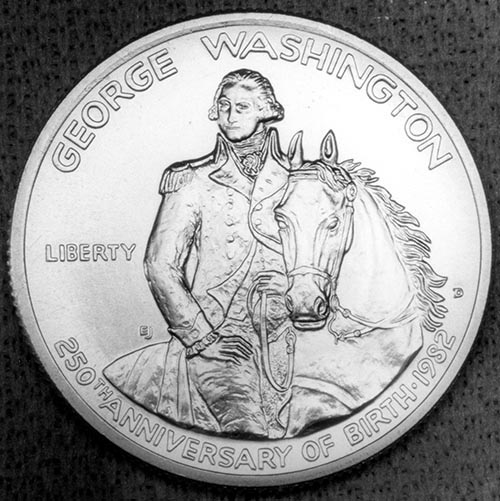
By David Schwager
For an affordable and accessible but surprisingly interesting and nuanced series, modern commemorative half dollars are well worth considering.
Commemorative coins are works of public art honoring our nation’s important people and pivotal events. Nowhere is this more manageable financially for the collector than in modern commemorative halves.
Inspiring & Affordable Coins
These coins combine a variety of themes and designs with a low entry price that fits most budgets. A set including all 22 types in both uncirculated and proof finishes can be completed for under $1,000, and adding new issues each year also is reasonably inexpensive.
Some high-grade mint-state pieces, however, add interest with more significant value.
Commemorative coins in general have declined in price since about 2009, and this could be seen as a reason to avoid them. It could also mean, however, that modern commemoratives are in the low phase of a normal market cycle and the low-mintage coins issued in the last few years are future keys that have not yet risen to their long-term levels.

After the well-publicized abuses of the classic commemorative period that started in 1892 and peaked in the 1930s, President Dwight D. Eisenhower put an end to U.S. commemorative coins when he vetoed three separate authorizing bills in 1954.
Every commemorative coin bill failed for the next two decades. After the success of the circulating Bicentennial coins of 1976, however, the stage was set for the first modern U.S. commemorative coin—the 1982 silver half dollar issued for George Washington’s 250th birth anniversary.
Washington Starts The Present Profiles
Unlike many earlier commemoratives, the Washington half dollar honored an event of national, rather than local, significance and profits went to the U.S. Treasury instead of to a fundraising effort. The 1983-84 Los Angeles Olympics program included no half dollars, and no commemoratives of any type appeared in 1985.

The next program, the popular 1986 Statue of Liberty set, raised money to help restore the monument for its 100th anniversary. A fee known as a “surcharge” was added to the price of each coin, including the copper-nickel clad half dollar, and paid to the statue centennial organization.
With commemoratives again being used as fundraisers, more organizations sought to benefit from coin sales and the number of coins predictably increased, peaking with the 16 different coins—including four different half dollars—of the 1995-96 Atlanta Olympics series.
In response to outrage over this proliferation, Congress passed the Commemorative Coin Act of 1996, which limited production to two programs per year, required organizations to raise matching funds, added provisions to prevent losses to U.S. taxpayers and set fundraising surcharges at $3 for half dollars, $10 for silver dollars and $35 for gold coins.
Returning to Prominence
With halves earning the lowest profits, sponsoring organizations sought only three half dollars in the period from 1997 to 2010. They recently returned to prominence, however, and the Mint was authorized to make commemorative halves in five of the last six years, missing only 2012.
Like all modern U.S. commemoratives, each half dollar has come in both uncirculated and proof versions. The market treats the two finishes as separate coins, much the way that two circulation issues with the same date but different mint marks are considered different coins.
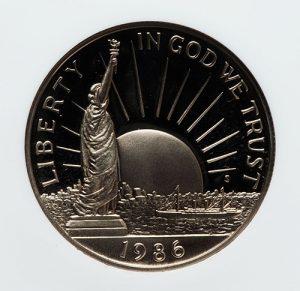
The more attractive proofs usually sell better, meaning higher mintages. Most of the more valuable half dollars are low-mintage uncirculated coins that sold poorly when new, reducing supply and leading to higher prices in the secondary market. When both mint-state and proof versions have sold in large numbers at the time of issue, with enough of both to meet demand, coins with the two finishes sell for about the same price.
This price is usually not high enough to justify certification—although, thanks to bulk programs for large customers, many coins end up in third-party holders. If you prefer certified coins, find already certified pieces and let someone else pay the grading fees.
Spend Time Studying Before Buying
The commonly encountered MS-69 and Proof-69 certifications add only a little to value. Almost all proofs, in addition, earn the Deep Cameo or Ultra Cameo designations (each certifier uses a different term), so do not pay extra for these labels.
Most coins, however, are worth multiples of their 69 values in MS-70 or Proof-70 slabs. Certified 70 coin values vary widely, so study grading service price guides and realized values carefully before deciding what premium to pay for a 70 coin. PCGS gives out fewer perfect scores than the other major grading services, and its MS-70 and Proof-70 coins tend to bring higher prices.

Collectors most often buy and keep commemorative half dollars in their original government packaging, although some people discard the boxes to save space. Because strike, toning, authenticity and other factors important to classic coins generally do not apply to pristine, well-made, modern commemoratives, collectors should feel confident buying raw (meaning uncertified) coins.
With nearly all modern commemoratives readily available in their original untouched condition, these are good choices to buy sight unseen. If you have a preferred dealer, continue to use this source. Buying through the Web or other mail-order sellers, however, usually provides the best selection and value.
Buying directly from the U.S. Mint is also an option. Many half dollars trade today a few dollars above or below their issue prices, so buying them this way poses little risk of price decline.
Acquiring Low-Mintage Issues
For the few low-mintage issues, buying new could save money. Consider checking sales figures in early December, just before sales end. If it looks as if a coin will have a low mintage (below about 60,000), prices will probably rise and buying new is a better choice than waiting for the secondary market.

This strategy has a small risk that the coin will go off sale without prior announcement. If you are certain that you plan to buy the coin at some point during the year, get on the Mint’s e-mail list and look for tits introductory offers, in which it gives small discounts on commemorative coins for the first two weeks of sales.
The observations made here apply to modern commemoratives halves in general. Every series, in addition, has its nuances, and it is worthwhile to look at several individual coins in greater detail.
1982 Washington half dollar
The first modern commemorative half dollar was also among the most artistic. Instead of using a predictable profile or bust, Chief Engraver Elizabeth Jones chose an equestrian portrait that uses the round space effectively and gives the coin a medallic appearance. The value of $90 in MS-69 (compared with only $12 raw) isn’t a typo. Although the Mint made these coins well and MS-66’s appear frequently, only a few reached the MS-69 grade that became common with later issues. So few MS-70 coins exist that the NGC and PCGS price guides do not list values in this grade.
1986 Statue of Liberty
This was the most successful commemorative coin program in U.S. history. The combined sales of gold, silver and clad coins raised $83 million for the Statue of Liberty centennial, more than any other program and an amount that will never be exceeded. As a result, these are the most available and least expensive of any U.S. commemorative coins.
1993 Madison/Bill of Rights
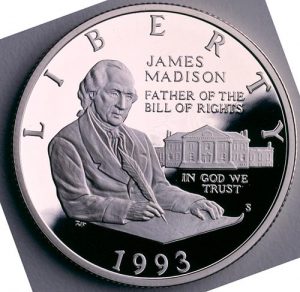
As the only silver modern commemorative half dollar other than the 1982 Washington, the 1993 Madison earns a little more respect. It is still inexpensive, and an attractive silver proof is a good first purchase to start a collection.
It was also the first coin used by the Mint in a specially packaged Young Collectors set. Aimed at children and issued intermittently through 2014, each such set has included a single commemorative coin (usually a half dollar, but sometimes a dollar) in a folder with cartoon art and informative text. One of these generally brings a small premium over the same coin in the usual capsule and box.
1992 Barcelona Olympics and 1994 World Cup
All of the 1989-to-1995 proof half dollars sold in sufficient numbers to meet all foreseeable future demand. These two coins, however, sell for slightly less than other similar issues. Here, the reason has to do with the coins’ subjects. Plenty of people were excited about these sports events before they happened and during the games. Once they ended, however, enthusiasm understandably faded and few people want a coin honoring a sports festival that is little remembered today.
This pattern can help predict the values of future commemoratives based on their themes. If a coin honors a current event, expect the price to decline once the event ends and interest wanes. See the discussion of the 1996 Atlanta Olympics coins for the exception.
1995 Civil War Battlefields
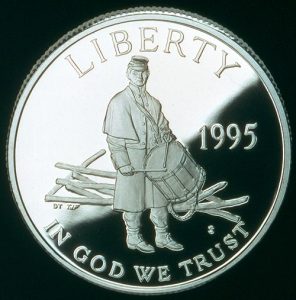
This coin is the corollary to the previous example. Collectors, as described in other COINage articles on modern commemoratives, prefer historic, patriotic and military themes. Like other commemoratives of that period, the Civil War Battlefields half dollar sold in large numbers and will always be easy to find.
Why, then, is it still worth about $30?
This coin has a subject that hits two of the three preferred themes (historic and military) while also benefitting from purchases by the many Civil War buffs not usually interested in coins. Even better than most historical commemoratives, it is not tied to a specific anniversary that makes the coin seem dated a few years later.
1995-96 Atlanta Olympics
If the word “boondoggle” can be applied to a modern coin program, the 1995-96 Atlanta Olympics is the one. This program included a staggering 32 coins, counting gold, silver, and clad in all denominations and both finishes. The 1995 Basketball and Baseball halves sold well.
By 1996, however, collectors were tired of the program and, with budgets stretched by the many commemoratives of various programs and denominations sold that year, responded less favorably. This led to the most valuable coins in the entire half dollar series. Although prices of the 1996 uncirculated halves might seem too high based on their mintages, they benefit as alternatives to the even more expensive key-date silver and gold commemoratives of that year.
2008 Bald Eagle
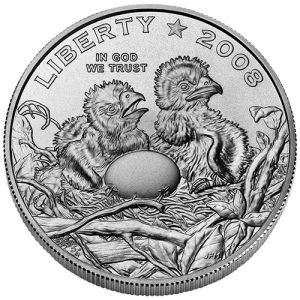
People like bald eagles and people like baby animals, but the young birds on this coin appear to be going through their awkward phase.
This was the last commemorative to sell more than 100,000 of each version. When the Mint, for reasons beyond its control, could not supply collectors with proof silver, gold and platinum American Eagle bullion coins in 2009, some stopped buying new coins, leading to lower mintages for most Mint products for the last few years.
2011 U.S. Army
The 2011, 2013 and 2015 halves have below-average mintages, especially in the uncirculated version, so why does only this one rate a better catalog value? Because the market for new coins takes three to five years to find its correct level. An unpopular coin remains too low for a few years, while a hot issue stays too high for a time. Within five years of minting, however, these short-term effects give way to prices based on long-term supply and demand. The 2011 Army half dollar is no longer under- or overvalued and has a price that should be stable.
2014 Baseball Hall of Fame
Think of the technical challenge involved in striking a three-part clad planchet into a curved shape. The Mint’s achievement earned this coin the Most Innovative award in the annual Coin of the Year competition. Although it sold in great numbers and will always be common, expect the “wow” factor of this coin to keep it close to its issue price at $20 to $25 in the long term.
2015 U.S. Marshals Service

The uncirculated version of this coin is the most undervalued modern commemorative half dollar. This coin closed sales with the lowest mintage of the series to date (30,231 coins), but still sells for about its issue price. Buying it raw, even in multiples, has little potential downside, as there is little chance the coins will drop below their current value. Because certified MS-70 coins of other low-mintage issues, such as the 2011 Army and 2013 Five-Star Generals, sell for over $300, I chose to invest in a PCGS MS-70 Marshals half dollar at $145.
2016 National Park Service
The greatest challenge to this modest investment came the next year, when the 2016 National Park Service half dollar sold even fewer coins. Despite its popular subject and acceptable design, sales were about 30 percent lower than the previous year, ending at just 21,028 pieces in uncirculated. The coin market moves in cycles, and several yearlong troughs in modern commemoratives, combined with the headwind of a $7 price increase over 2015, made this coin the new key to modern commemorative halves.
Coins in original packaging bring about $50, and the PCGS MS-70 that went for $100 in 2016 now sells for $250. Overall commemorative sales of all types remained low, and in the same year the 2016 Mark Twain proof $5 gold proof became the lowest-selling proof commemorative in the modern period and the uncirculated National Park $5 gold reached a new low mintage for modern commemoratives of any type.
2017 Boys Town
The question for 2017 is whether mintages will continue to drop, or whether news of profitable low mintages will attract speculators and spur sales. On the one hand, although most collectors have heard of Boys Town, a Nebraska charity serving at-risk youth, it is better known for the 1938 film “Boys Town” than for its worthwhile current work.
On the other hand, the half dollar’s price of $25.95 in uncirculated make it a modest investment for those who want to support the organization or to make a bet on a low mintage. Consider watching mintages throughout the year and deciding whether to buy just before the coin goes off sale, probably in late December
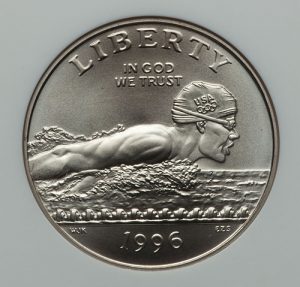
Start collecting by buying a piece or two that strikes your interest, possibly with themes you find appealing. If you decide to continue the series, consider drawing up a simple collecting plan. With 22 types in two finishes, owning one of each in both proof and uncirculated is practical, although more people will choose one variety over the other.
Consider storage and display. Would you prefer coins in government packaging, in matching slabs or in an album? A uniform set will be more pleasing than a mix of options.
Consider cost, as well. A complete set of proofs in capsules or original boxes shows the artwork to good effect, has no expensive keys and can be accomplished for under $400. A set of certified MS-70 coins, by contrast, will cost in the high four figures. Subsets are also possible, such as the 1995-96 Atlanta Olympics keys or the Young Collectors special packaging.
While working on any plan, the collector of commemorative half dollars will have the satisfaction of building and owning a set of works of public art. Just as important, you will have the honor, in a small way, of telling our nation’s stories.

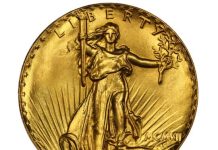
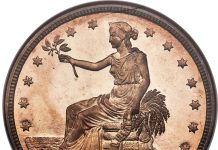
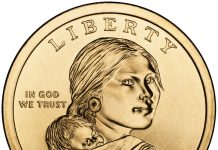





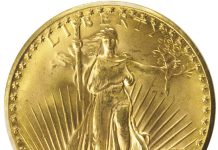




I enjoy collecting these modern commemorative coins. I currently have a full set with both proofs and uncirculated mint coins.